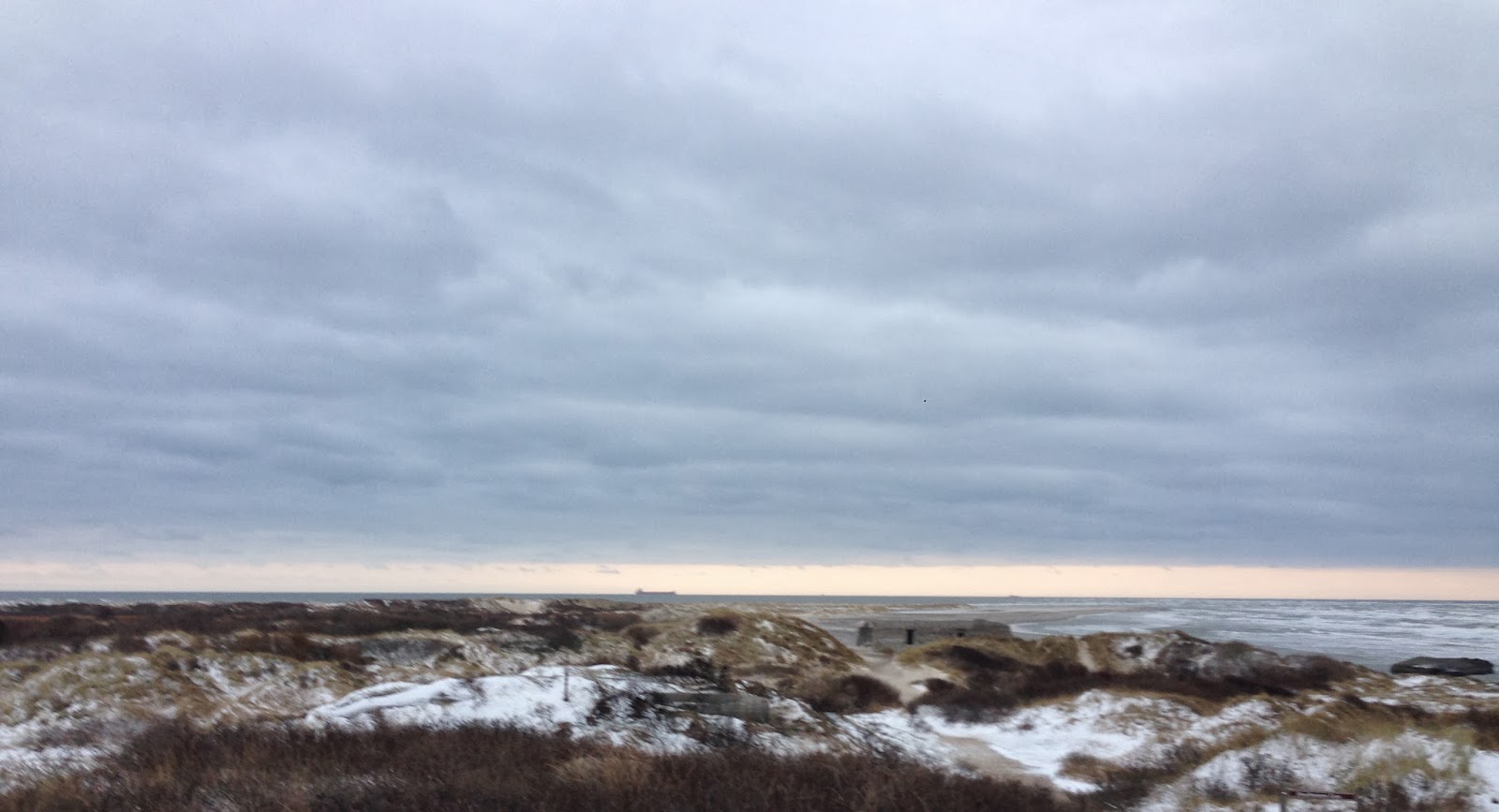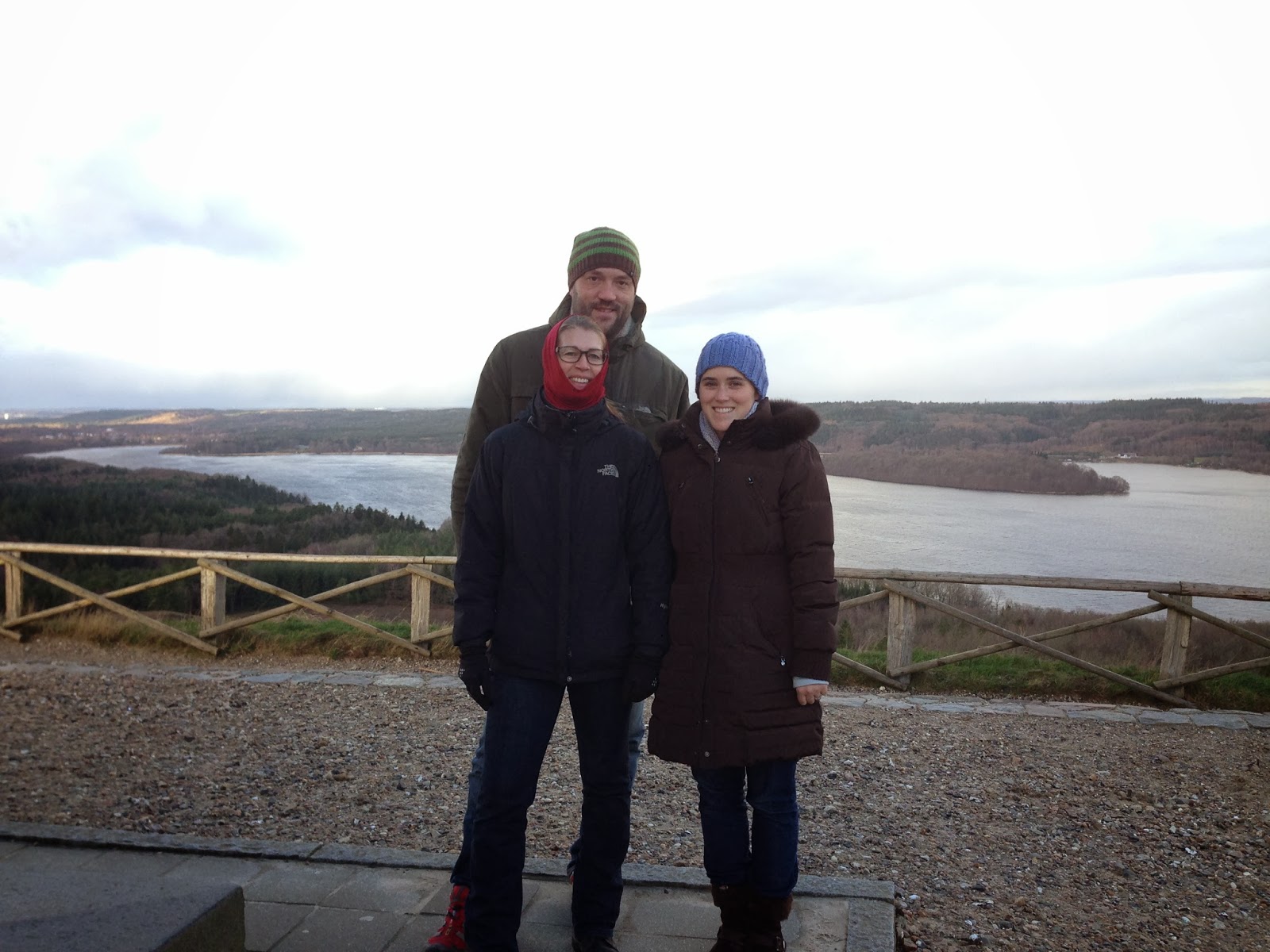Last week went by in a complete blur...
Monday morning was spent teaching biology and Monday evening was spent having dinner with the Danish student teachers (Sophia, Morton, and Trine) who came to Santa Barbara.
Tuesday morning was spent at Favrskov Gymnasium (Gymnasium is the closest equivalent to the American "high school") and Tuesday afternoon was spent at Hadsten Højskole (Højskole is a uniquely Danish concept - it is essentially schooling purely for the sake of learning and self-improvement).
A chart of the Danish education system
I think I finally understand how all of the pieces come together!
The numbers along the top are ages (of the students).
Purple represents the type of school I am currently working at.
Most of the day on Wednesday was spent in Aarhus at VIA University in the teaching program (this is the university we are technically exchanging with). We went to a series of classes to get an introduction to what learning how to teach looks like here. The first class was a biology class. Here, prospective folkeskole teachers (see grahic above) study the material at the same time they are learning how to teach the material, so the class is specifically structured to not only teach the content, but also to teach how to teach the content to students. The class was all in Danish, but it was about one of my favorite topics (genetics!!) so I was able to understand a fair amount.
I even understood the word problem below enough to solve it correctly!
Lav et stamtræ der viser nedarvning for en kønsbundet recessive sygdom (fx. farveblindhed), hvor en task kvinde der er er bærer XbX får 4 børn (2 drenge of 2 piger) med en syg mand XbY.
We next went to an international class because at VIA they have a huge international exchange program. Student-teachers come here from all over the world and study abroad here for 6 months. They take courses at VIA and student-teach periodically. There were students in this class from China, Germany, the Philippines, Ireland, Turkey, and more! It was a pretty incredible learning experience. The next two classes were English classes (as in learning how to teach English). We spent the afternoon in a lovely cafe with Sophia, Morton, and Trine again.
Thursday, we proctored the 9th grade exams. These are nation-wide exams that all 9th graders take. The actual government-administered exam will be held this summer, but the schools do a round at this time of year as a sort of practice, but also so that they can give the students grades before the summer, which are used to determine where they can and will go after 9th grade. Therefore, while these aren't the "real" exams, the grades are very real and the tests matter a lot.
On Thursday we proctored the biology exam (which is a 30 minute multiple choice exam - I was very surprised by this) and the English exam. The English exam has 4 parts: listening comprehension, reading, grammar, and an essay. It was quite challenging and probably wouldn't be a walk in the park even for a fluent American student because it was not entirely straightforward.
On Friday morning we corrected the English exams and then left school early for Copenhagen!
Copenhagen was lots of fun and I really enjoyed being there again. It was fun to get to be the tour guide a bit this time, since I'd been there for two trips before. Though of course I still had to rely on my phone a lot.
I want to make sure to post this tonight, so here's what we did/saw in Copenhagen in list form:
Thursday, we proctored the 9th grade exams. These are nation-wide exams that all 9th graders take. The actual government-administered exam will be held this summer, but the schools do a round at this time of year as a sort of practice, but also so that they can give the students grades before the summer, which are used to determine where they can and will go after 9th grade. Therefore, while these aren't the "real" exams, the grades are very real and the tests matter a lot.
On Thursday we proctored the biology exam (which is a 30 minute multiple choice exam - I was very surprised by this) and the English exam. The English exam has 4 parts: listening comprehension, reading, grammar, and an essay. It was quite challenging and probably wouldn't be a walk in the park even for a fluent American student because it was not entirely straightforward.
On Friday morning we corrected the English exams and then left school early for Copenhagen!
Copenhagen was lots of fun and I really enjoyed being there again. It was fun to get to be the tour guide a bit this time, since I'd been there for two trips before. Though of course I still had to rely on my phone a lot.
I want to make sure to post this tonight, so here's what we did/saw in Copenhagen in list form:
- Tivoli
- Rådhuspladsen (our hostel was just a few blocks away)
- Strøget, including: Illums Bolighus, Hay House, Magasin, the Disney Store, the Lego Store, and more
- Ny Havn, including a Canal Tour
- Christiansborg
- Amalienborg
- Frederik's Church
- Danish Design Museum which had this particularly interesting exhibit
Photo from the aforementioned exhibit:
On the left is an ostomy pouch designed by the Danish company Coloplast.
On the right is a plate designed by the Danish company Royal Copenhagen.
Cool fact I just learned - this year is the 200th anniversary of the Danish folkeskole! This system was originally established (and made a requirement for all children) beginning in 1814.
Today I taught my final biology lesson here in Denmark. It went very well and I'm quite proud of my students. Several groups were able to write their whole lab report in English, which is extremely impressive, particulary considering this was also their first official biology lab report (they're in 7th grade)! I am very proud and hopeful that they now know a little more about the bacteria they encounter every day.
Finally, below is a reflection I wrote for one of my weekly reflection assignments on my vision for a good school:
I chose to write about this
topic because this week we have been introduced to even more examples of the
Danish education system, which has revealed the key components of the Danish
vision for a good school. I do
think that to a great extent, this vision aligns well with my vision for a good
school.
First and foremost is the
importance of community. At least
from my observations, this is the central guiding value of the Danish education
system (and perhaps even Danish society).
Community is also central to my vision for a good school. This has become increasingly apparent
to me because I often find myself saying: “wow – X is so great here, but it
would be very difficult to put that into practice at home because we don’t have
the sense of community they have here.”
This community feeling seems
to be established and maintained with three key elements: small &
tight-knit groups, collaboration, and creativity & playfulness.
The small & tight-knit
groups are created throughout the education system. They are present in primary school (such as Østervangskolen) at secondary schools (such as Favrskov Gymnasium)
and even at the uniquely Danish “Højskole.” First, they are most obvious in the
class sizes, which seem to reach a maximum of 28. Second, they are present in the fact that students stay with
their specific group for years.
Third, this manifests itself in the size of the class (as in year) as a
whole, which doesn’t even get close to our class sizes even at the
Gymnasium! On the next level, this
is present in the size of the school as a whole. This translates over to the size of the teaching staff,
which is relatively small and particularly tight-knit because teachers teach
multiple subjects. Finally, the
fact that teachers teach the same class for multiple years further reinforces
this tight-knit community.
I really believe strongly in
these small and tight-knit groups.
Occasionally, I am skeptical because it provides fewer opportunities for
teacher-specialization and fewer opportunities for students to meet different
people, if they do not get along with the standard crowd. However, I think the positives
outweigh, and sometimes negate, the negatives and believe that this is a part
of my vision for a good school.
Collaboration is also
established throughout the education system. It is present in nearly every class session as group work is
a common theme here. The schools
are designed to encourage and enable collaboration, as they have space to work
and study outside of the classrooms.
Favrskov Gymnasium especially had great examples of this: it looked like
the areas outside of the classroom were just as conducive to studying and learning
as the areas inside of the classroom and this was to encourage student
collaboration. There were even lab
benches in the halls!
Collaboration is also
fostered between teachers. For
example, since teachers don’t have their own classrooms, they see each other
multiple times a day in the staff room and have a chance to support each other
and talk about opportunities to work together. Since the schedule is different every day, they have
different prep periods every day, so they may sit next to a new teacher each
day, therefore supporting even more of that community collaboration. Again, Favrskov Gymnasium even went a
step further by having staff workrooms with randomly assigned desks. This meant that each teacher had a
space to work and plan lessons near a randomly assigned group of other
teachers. All of this encourages a
lot of collaboration between teachers.
I believe this collaboration (between both students and teachers) is a
key element of my vision for a good school.
Finally, creativity and
playfulness are two linked elements that I believe are crucial to fostering the
feeling of community that I am referring to. This creativity and playfulness is not as immediately
apparent here. I would say that,
when present, this feeling is arguably more obvious at home. However, I think it is present in the
schools here just in a more subtle way, overall. It is very apparent at the Højskole where creativity and playfulness are almost a focus of the
school as a whole. I think this
contributes to the sense of joy about learning and acceptance of each other as
a community. A specific example of
this at Østervangskolen came up when one class was having social
conflicts. Instead of punishing the
group, the school staff decided to deal with this by having one fun social activity for the
class a week. There is a feeling
that playfulness and creativity are a natural aspect of being human and that it
can and should contribute to the school community, not take away from it.
.JPG)






































.JPG)
.JPG)
